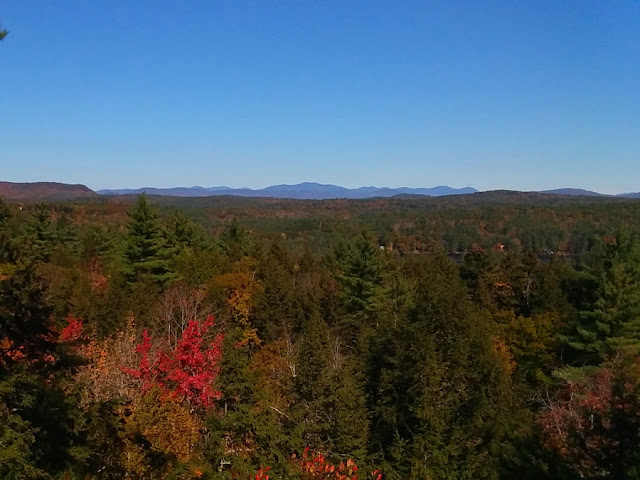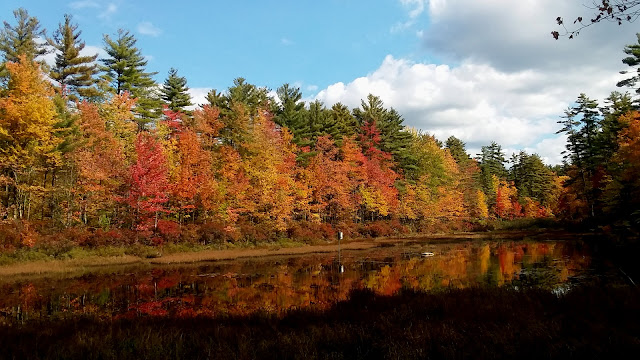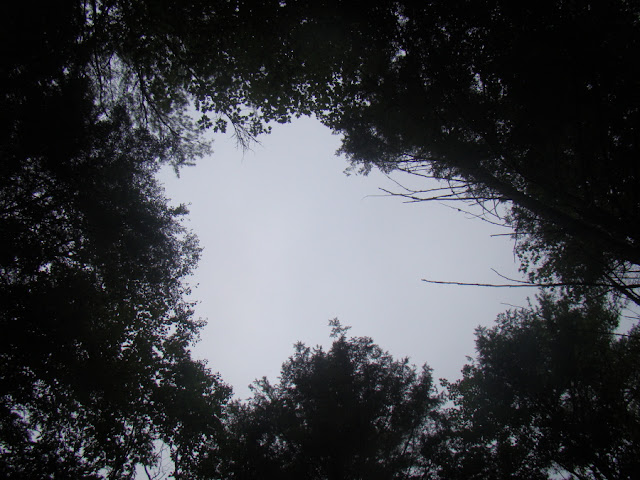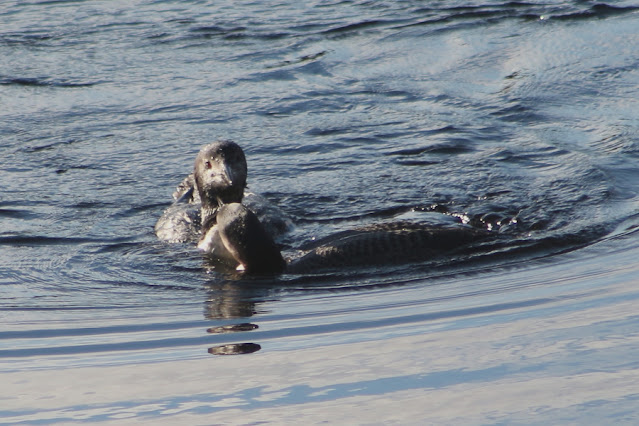We didn't quite make it to November, but Lake Wicwas finally had a frost on Friday morning, October 29th. It wasn't even a hard frost, only forming ice crystals in areas exposed to open sky with radiational cooling; areas under tree cover or near the warm lake still didn't have even a touch frost. But in open fields the frost was heavy.
The plants don't wait for a frost to partake in their annual transition, they start on their own schedule as shown by these cat-o-nine tails in a swamp on Squam Lake.
We saw these along the "Swamp Walk", a neat board walk through the swamp in the Chamberlain-Reynolds Memorial Forest in Center Harbor. (Here's a map in case you want to visit.) It's a beautiful area along Squam Lake with crystal clear beaches, nice views of the Squam and Sandwich Mountain Ranges, Rattlesnake Hill, and even Red Hill.
 |
| Red Hill in all its late fall glory. |
While most plants are giving up for the year and preparing to go dormant, having created their seeds and sent them on to find a place to live on their own, one plant is just now blooming: Witch hazel.
 |
| Witch hazel blossoms are just getting started in October. |
 |
| The birth of next year's fruit. |
What's even more interesting is that while it's blooming, it is only now releasing its seeds from last year. The seeds are contained in pods that mature in the fall and burst open, shooting seeds out ten, twenty, or more feet from the tree.
 |
| A witch hazel fruit about ready to launch its offspring into the world. |
A witch hazel branch is also often taken as preferred material for a divining rod used to locate sources of water, though I won't attest to that ability.
Taking a late fall hike on the Mount Welch-Dickey loop this week I found an example of a tree with two year's worth of fruit on it.
 |
| Red Spruce on Welch Mountain at about 2600' elevation. |
These spruce trees have the tightly-wrapped reddish-brown cones of this year's seeds still maturing while the dry, brittle, gray open cones of last year are still hanging on the tree after releasing their seeds to the ground. These trees have adapted their own unique methods of surviving in the extreme weather conditions near tree line in the White Mountains.
This past week I came across more evidence of life coming and going, passing from one form to another.
 |
| Some poor bird met its demise right here. |
This pile of feathers in the middle of a trail tells me some unlucky bird, after feeding itself all summer on the seeds and insects of New Hampshire, gave its sustenance to a larger animal. I have two questions here: One, what kind of bird was it? I first thought "blue jay" due to the color of the feathers, but they aren't nearly blue enough, and they are too small; blue jays have bright blue feathers with lots of white as well.
But then consider that there are only small, downy feathers here - no flight feathers - so the larger parts of the bird with different coloring may be elsewhere. If not a blue jay, other possibilities include nuthatch and titmouse, both of which are smaller and have blue and gray coloring.
 |
| Just little blue tips at the end of some feathers. |
The other question is, who was the predator? A kestrel, merlin, or small hawk are candidates which would explain a pile of small feathers resulting from an in-flight attack. Another possibility is a feline, either a bobcat or a feral cat. It was pretty far from civilization to be a pet cat, but that is a possibility as other than habitat loss, cats are by far the number one human-related killer of birds in the United States, accounting for an estimated 2.4 billion deaths per year in the U.S. [REF: US Fish and Wildlife Service]
I'll never know the answer to either of those questions, but I do know that a summer's worth of feeding has provided a good nutritious meal to one of our forest creatures.
Tomorrow brings us November, and we'll soon be without all our fall colors in the trees, but as of today there are still a few hardy souls hanging onto their leaves to brighten our lives even on a dreary, rainy, late October morning.


















































